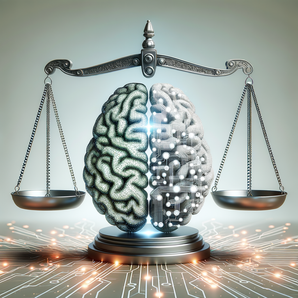Empowering AI Tools to Detect Hate Speech with Greater Precision
Empowering AI Tools to Detect Hate Speech with Greater Precision
A groundbreaking machine-learning method has been created by a group of researchers at the University of Waterloo, boasting an ability to discern hate speech on social media platforms with an impressive 88% accuracy. This pioneering approach, centered on a mechanism known as the Multi-Modal Discussion Transformer (mDT), is looking to relieve the mental strain borne by employees who had to manually sift through such content.
The mDT is designed to understand the correlation between text and the associated images, thereby gaining a better context, something that previous methods for hate speech detection have struggled with. This capability holds great promise in reducing false positives, which frequently occur due to misinterpretations of culturally specific language.
According to Liam Hebert, the lead author of the study, and a computer science Ph.D. student at Waterloo, the technology aims to humanize the digital space by minimizing the emotional burden that comes with manually detecting hate speech. He claimed that through the community-centered application of their AI, they intend to play their part in making the internet a safer platform for everyone.
Past efforts have examined human conversations in a bid to decipher their underlying meanings, but have consistently struggled with understanding nuanced and context-inclusive statements. With the Waterloo team's methodology, accuracy has reached a significant 88%, leaving behind previous models that could only achieve 74% at most.
Hebert commented on the importance of understanding the context when dealing with hate speech. He used the example of the statement "That's gross!", which could assume different meanings depending on what it's referring to - a pineapple pizza or a person from a marginalized community. Hebert explains that while humans can easily differentiate the contexts, it is much more challenging for an AI model to connect the dots and understand the context, particularly when images and multimedia elements are in the mix.
The Waterloo team diverges from past efforts by constructing their model using a dataset that includes the context of the hateful comments and not just isolated instances. The model was trained using over 8,000 Reddit conversations, with close to 19,000 labelled comments, coming from around 850 communities.
Hebert pointed out that there is a huge need to detect hate speech on a larger scale given that over three billion people use social media each day. He asserted that the widespread impact of these platforms necessitates vigilant hate speech monitoring to ensure everyone is respected and safe.
The research, dubbed "Multi-Modal Discussion Transformer: Integrating Text, Images and Graph Transformers to Detect Hate Speech on Social Media," has been published recently in the proceedings of the Thirty-Eighth AAAI Conference on Artificial Intelligence.
Disclaimer: The above article was written with the assistance of AI. The original sources can be found on ScienceDaily.




